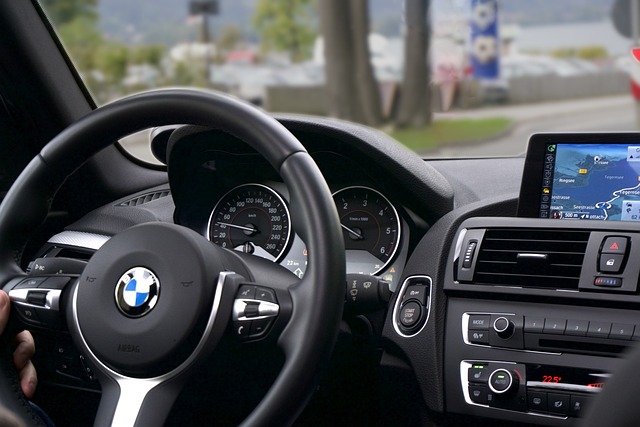Looking to register your car in California? This comprehensive guide walks you through the entire process, from understanding essential requirements to completing the paperwork. Discover the crucial step of performing a Vehicle Identification Number (VIN) verification at the DMV, ensuring accuracy and swift registration. Learn about both in-person and online/mail options for convenience.
- Understand California Car Registration Requirements
- Gather Necessary Documents for DMV Visit
- Perform Vehicle Identification Number (VIN) Verification
- Complete Application and Pay Fees at DMV
- Register Your Vehicle Online or by Mail
Understand California Car Registration Requirements

Before registering your car in California, it’s crucial to understand the state’s specific requirements. The California Department of Motor Vehicles (DMV) mandates that all vehicles operated within the state be properly registered and have undergone necessary safety inspections. One critical aspect is the DMV VIN verification process, where the unique Vehicle Identification Number (VIN) of your car is cross-checked against the manufacturer’s records to ensure authenticity and compliance with emission standards.
Additionally, a mobile vin inspection or verification service can streamline this process. These services allow you to get your vehicle’s history and necessary documentation ready for registration without having to visit a DMV office. This approach, often facilitated by advanced technology, saves time and effort while ensuring that your car meets all the required standards for California registration.
Gather Necessary Documents for DMV Visit

Before heading to the DMV, ensure you gather all the essential documents for a smooth registration process. The California Department of Motor Vehicles (DMV) requires specific papers to verify your vehicle’s identity and history. One crucial step is completing a vin inspection, which involves checking the unique 17-character Vehicle Identification Number (VIN). This process can be facilitated by utilizing a mobile vin inspection or mobile vin verifier service, making it more convenient for busy individuals.
To start, you’ll need your vehicle’s title, registration certificate, and proof of insurance. Additionally, a valid driver’s license or state-issued ID is mandatory. If you’re transferring ownership, a bill of sale or donor agreement might be required. These documents ensure the DMV can conduct a thorough vin verification, crucial for maintaining accurate vehicle records in California.
Perform Vehicle Identification Number (VIN) Verification

Before registering your car in California, it’s crucial to perform a Vehicle Identification Number (VIN) verification. This step is essential as it ensures that the vehicle you’re about to register is genuine and has not been reported stolen or had its identity altered. You can complete this process through a DMV-approved mobile vin verifier, which allows for convenient and efficient inspection.
A VIN inspection involves cross-referencing the unique 17-character code with official databases to confirm the vehicle’s make, model, year, and other critical details. This is typically done by entering the VIN into an online system or using a mobile app provided by the vin inspection service. Once verified, this information will be used to ensure your car meets all safety and environmental standards set by the state, completing another vital step in the registration process at the California DMV.
Complete Application and Pay Fees at DMV

After gathering all your documents, it’s time to head to the California Department of Motor Vehicles (DMV). Here, you’ll complete a series of steps to register your car. The process involves filling out an Application for Title and Registration (Form DMV-123), which requires detailed information about your vehicle, including its make, model, year, and unique Vehicle Identification Number (VIN). This VIN is crucial for the dmv vin verification process, ensuring that your car’s details match those on record.
Along with your application, you’ll need to pay the necessary fees. These include registration fees and a title fee if you’re transferring ownership. You can typically make these payments online or at the DMV office using cash, credit card, or debit card. For added convenience, some mobile vin verifiers offer services that allow for streamlined payment processing and even remote submission of your application, including a mobile vin inspection to verify details before finalizing registration.
Register Your Vehicle Online or by Mail

Registering your vehicle in California can be a straightforward process, offering multiple options for convenience. One of the simplest ways is to register your car online or by mail. Before starting, ensure that your vehicle meets all the requirements and has undergone the necessary safety inspections.
For an online registration, you’ll need to provide key details like your vehicle’s make, model, and year, along with your personal information. The California Department of Motor Vehicles (DMV) will then perform a VIN verification, cross-checking the data against their records to ensure accuracy. Alternatively, if you prefer a mail-in process, gather the required documents, including proof of ownership and identification, and submit them with a completed registration form. Both methods are efficient ways to complete your vehicle’s registration without visiting a DMV office.
In conclusion, registering a car in California involves understanding key requirements, gathering essential documents, verifying the Vehicle Identification Number (VIN), completing an application at the DMV, and choosing between online or mail registration. Remember that proper DMV vin verification is crucial to ensuring your vehicle’s legal status. By following these steps and staying informed about local regulations, you’ll successfully navigate the process and hit the road legally.



